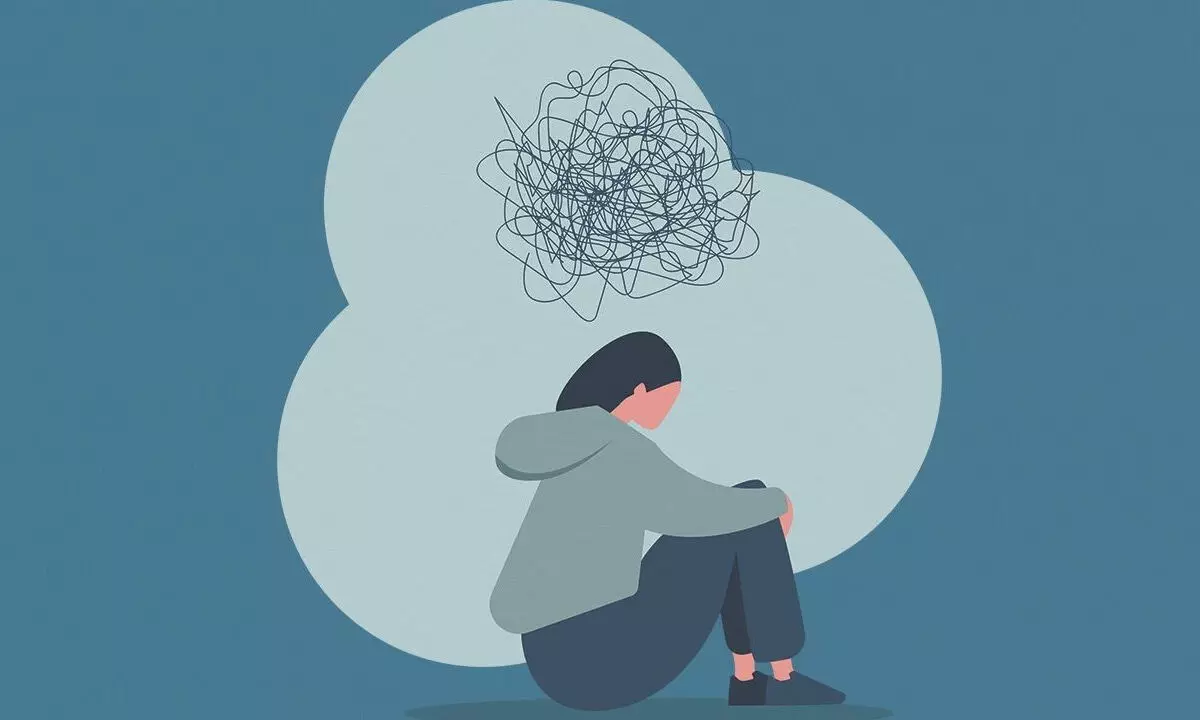Live
- WPL 2025: Matthews, Sciver-Brunt and Harmanpreet carry MI to massive 213/4
- MLA Anirudh Reddy Accuses KTR of Involvement in Manhattan Project Scam
- TGPSC Clarifies on False Propaganda Regarding Group-1 Recruitment
- Hyderabad Police Ensures Security as Holi and Ramadan's Second Friday Coincide
- Five MLCs Elected Unopposed in Telangana Under MLA Quota
- Sambhal prepares for a peaceful Holi with tightened security and special patrols
- CNG, PNG prices to become cheaper in Rajasthan from March 14
- Anti-Rape ad to screen in theaters before movies, like health advisories
- Prodigy Finance Offers Three Scholarship Awards totalling an amount of $19,000 for Global Students Starting Fall 2025
- Champions League drama likely to affect La Liga with big games this weekend
Suicide prevention strategies should address social risk factors too


National strategies aimed at preventing suicide should include measures to address social issues to prevent people from reaching “crisis point,” even as clinical services for those in crisis are critical, argue authors of a new six-paper series published in The Lancet Public Health journal.
New Delhi: National strategies aimed at preventing suicide should include measures to address social issues to prevent people from reaching “crisis point,” even as clinical services for those in crisis are critical, argue authors of a new six-paper series published in The Lancet Public Health journal.
The international team of authors, including those from the Public Health Foundation of India, New Delhi, called for a change in the narrative around suicide -- to move away from presenting it as a purely mental health issue and acknowledge the impact of social risk factors, such as poverty, domestic violence, addictions and isolation. This was particularly relevant for India, which released the National Suicide Prevention Strategy in November 2022, and grounded most of its proposed solutions within the mental health scope, despite police data showing that factors, including gender, employment, and stressful life events have important roles to play, the researchers said. The strategy is aimed at lowering deaths in the country due to suicide by 10 per cent by 2030. Objectives include setting up effective surveillance systems for suicide and integrating a mental well-being curriculum across educational institutions.
Published on World Suicide Prevention Day, the series’ authors described six aspects of a public health approach to preventing suicide. They included a model that looks at social determinants of suicide to show how suicide might arise. “With over 170,000 lives lost annually due to suicide in India, addressing the underlying socio-economic pressures in addition to mental health is a critical national priority. By taking a public health approach and fostering collaboration among various sectors, we can create a more supportive environment that prioritises early intervention, reduces stigma, and ultimately saves lives,” said series author Rakhi Dandona, Professor of Public Health at the Public Health Foundation of India. The public health approach should also look at national policies aimed at cushioning the effects of economic downturns, including maintaining minimum wage levels, and how exposure to instances of suicide -- either through media or in real life -- can heighten suicide risk, according to the authors.
In one of the series’ papers, the authors said there is a link between poor economic status and suicide in low- and middle-income countries (LMICs). In India, more suicide rates are seen in men in states with higher levels of unemployment, they said and added that unemployment was one of the most important risk factors among women too. They also said that a model that accounted for farmers with marginal land holdings, indebted farmers, and the proportion of land used for non-food crops (or cash crops) could explain 75 per cent of changes in suicide rates between states.
In another paper, the authors drew attention to “transmissibility of suicide” for arriving at optimal ways to address the issue. Transmission can occur when one is exposed to suicide-related information, including another person dying by suicide, which draws attention to or highlights specific suicide methods. They called for “restricting the cognitive availability of means through attention to media and other representations of suicide methods.” “In simple terms, it means that media needs to consider if the reporting is necessary, how should it be reported that does not increase the risk for others, and is an accurate reporting of circumstances along with promoting help-seeking to those who need. Guidelines are available in this regard,” Dandona told PTI.
In the fifth paper, the authors described a range of interventions that might address four major risk factors for suicide -- alcohol use, gambling, domestic violence and abuse, and suicide bereavement. At an individual’s level, there are signs that can be watched out for such as the language one uses while conversing, Dandona said. “It is important to listen to what people have to say, the language of despair they may use to indicate these risk factors. Anecdotal evidence suggests that such statements highlighting suicidal thoughts are many times missed or not taken seriously,” she said. “This means that for these conversations to happen, people need to feel to be in supportive environment to be able to share what they are going through and to be taken seriously,” Dandona said. Suicide is the third-leading cause of death among those aged 15-29 years and is estimated to claim over 7.2 lakh lives every year, according to the World Health Organisation. About three-fourths of suicides around the world happen in low- and middle-income countries, it said. (PTI)

© 2025 Hyderabad Media House Limited/The Hans India. All rights reserved. Powered by hocalwire.com






